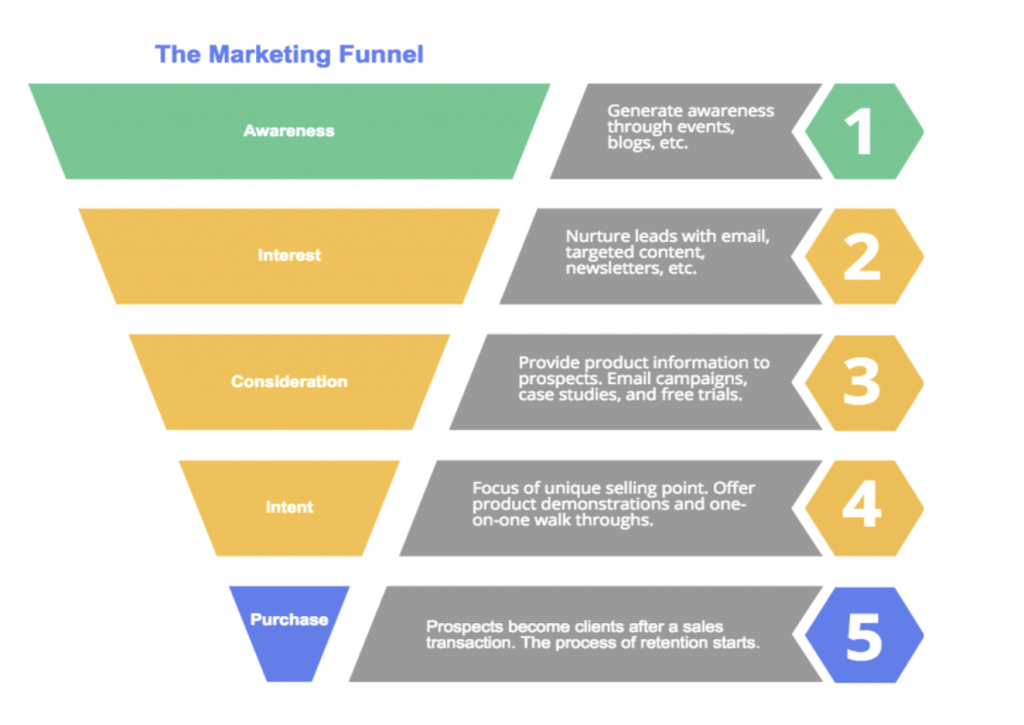23 Sep eCommerce funnels in the user journey
eCommerce funnels in the user journey
Recently I met with Google in London.
As Google Premier Partners, we get to go to some really great events with Google and they tell us all of the latest things that are happening in eCommerce and what’s driving growth.
I want to talk about is an eCommerce funnel in terms of a user journey.
My background is in business to business marketing; where marketeers live in user journeys and a pushing prospects through a sales funnel. I’ve always been familiar with that, but it’s not something applied to e-commerce as such.

When it comes to e-commerce, we become very results oriented. We concentrate on Cost of Sale (COS) and Return on Ad Spend (ROAS) and really thinking about when people are ready to buy. We want to interrupt & capture them at that point, at the bottom of the funnel.
People at the top of the funnel might know they have a problem but not know the solution, versus the bottom of the funnel when they’ve done all their research, they know what they need to solve their problem, and know what they’re going to buy.
We might normally capture them through something like a Google Shopping Ads, but when we start thinking about the top of the funnel, we’re very much into education.
So if you have a product that solves a particular problem, then you might create some blogs or some written content, perhaps video content, YouTube reviews maybe, to get people into the frame of mind where they think, ‘oh, right, this is a product that can solve the problem’.
How we promote that kind of content is really key.
It’s a very different concept to last click attribution models. It certainly can make for a difficult conversation, where clients are very focused on ‘I’m spending a hundred pounds, therefore I immediately need to get a thousand pounds worth of revenue’.
We very much work on a return on ad spend, cost of sale model, where, ‘I’m advertising for people to research the brand’ is maybe not something that we would necessarily do, so what Google is saying makes sense when, when you think about it.
Actually, there’s probably a 10 step process on average for ecommerce transactions.and as I say, it begins with that research phase of:
- What do I want?
- What do I need this for?
- When do I need it?
- What kind of problem is it going to solve?
- What product am I going to need for this?
- Does the product I think I need even exist?
So when we get to that point, we’re really talking about probably display advertising, YouTube advertising and other brand building exercises that in this world of ecommerce, is not necessarily going to get you a sale straight away.
However, depending on how quick your sales cycle is, it may get you a sale a month down the line, a week down the line, maybe six months down the line if you’re on what we call high value/high research products.
So for instance, if you’re a bathroom retailer, we would expect someone to start doing research, maybe even before they’ve actually bought the house that they want to put a new bathroom in.
This process may take three, six, or even twelve months so Google’s message in this instance is if you’re there at the first step, you have a much better chance of winning the sale at the last step.
If you’re providing people with great information and great content to consume when they’re doing their research, then they are going to feel much more inclined to buy from you.
Of course, your price and product offering still needs to be on the money. You’ve got a much better chance once you get to that point. So that’s really the crux of the matter, working out strategies to actually work through a funnel from research right through to purchase rather than simply trying to grab people last minute, right at the bottom of the funnel.
Justifying the cost of this exercise within a small business can be difficult. The process you need to go through to make this kind of investment is about the lifetime value of a customer to you. For example; if on average customers buy from you 10 times at an average order value of £50, you know that the average Lifetime Value (LTV) of a client is £500. You may decide therefore that you can afford to pay £100 to attain that customer. If we were working purely on Cost of Sale on the initial purchase of £50, it would look awful because it would be 200%, and we would stop that campaign immediately. However, if we take into account the LTV of the customer, that campaign is actually profitable for your business.



